25+ Sample Company Fact Sheet
-
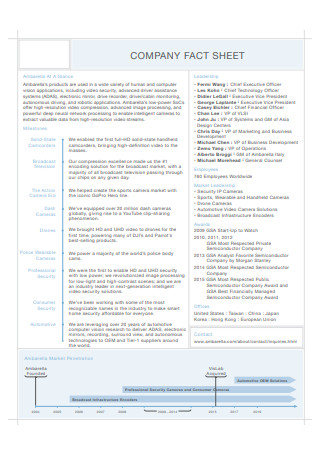
Company Fact Sheet Template
download now -
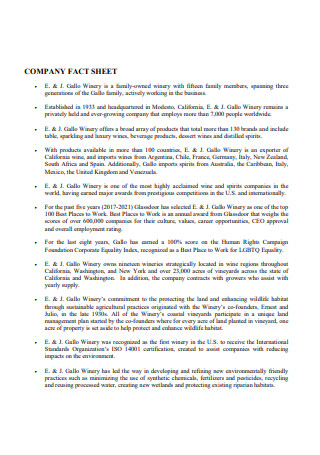
Basic Company Fact Sheet
download now -
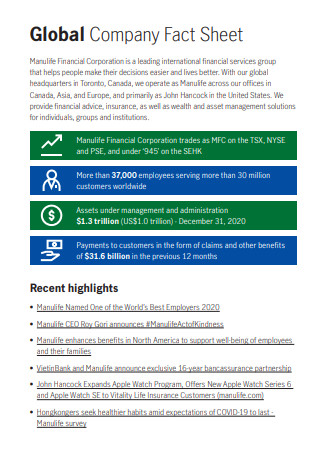
Global Company Fact Sheet
download now -
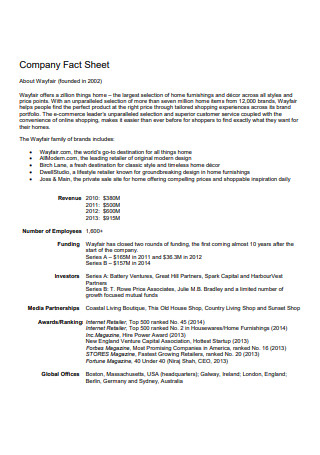
Company Fact Sheet in PDF
download now -
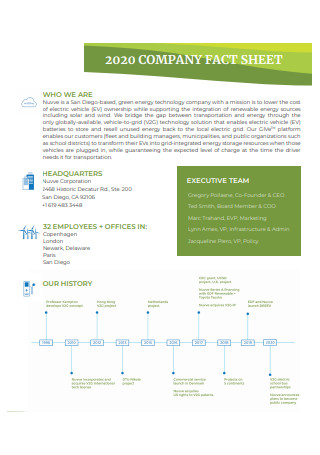
Formal Company Fact Sheet
download now -
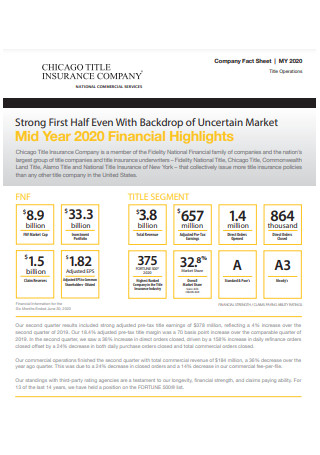
Company Fact Sheet Example
download now -
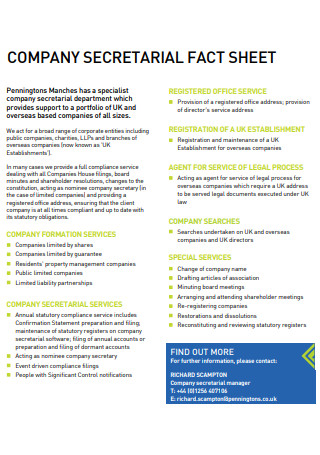
Company Sectretarial Fact Sheet
download now -
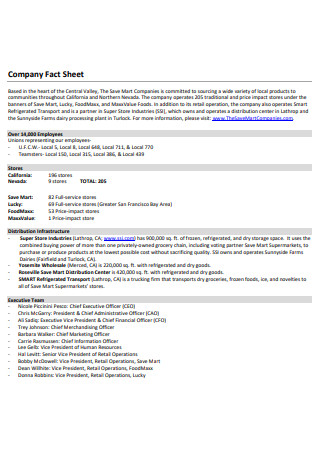
Sample Company Fact Sheet
download now -
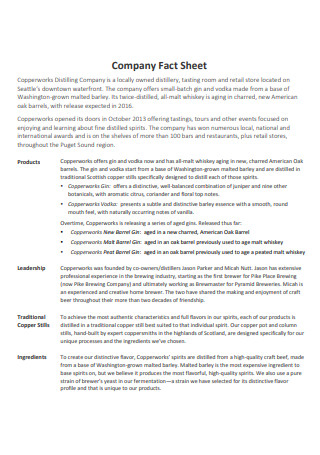
Standard Company Fact Sheet
download now -
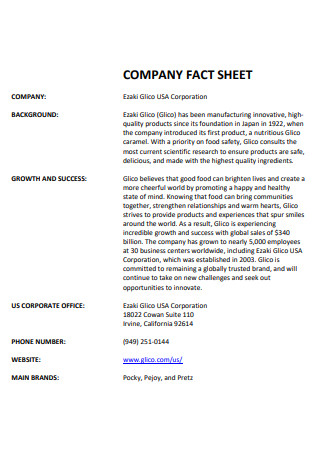
Corporation Company Fact Sheet
download now -
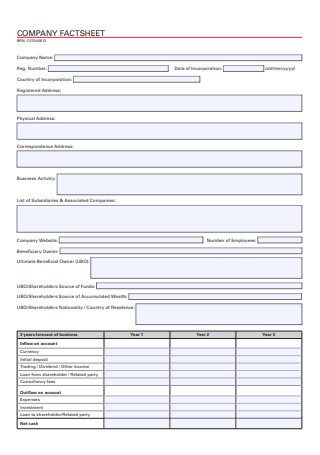
Company Fact Sheet Format
download now -
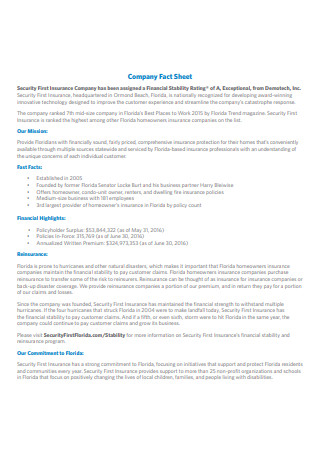
Security First Insurance Company Fact Sheet
download now -
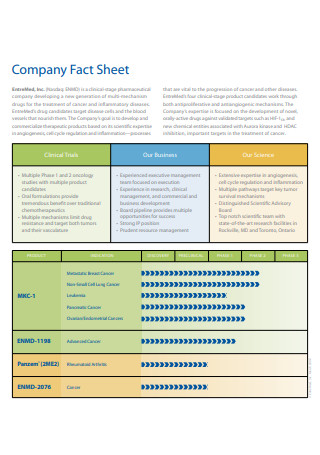
Printable Company Fact Sheet
download now -
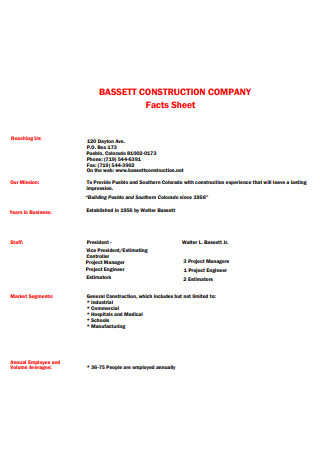
Construction Company Fact Sheet
download now -
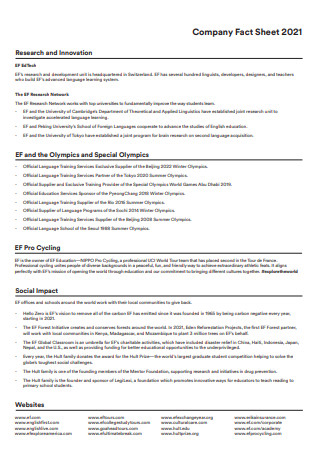
Draft Company Fact Sheet
download now -
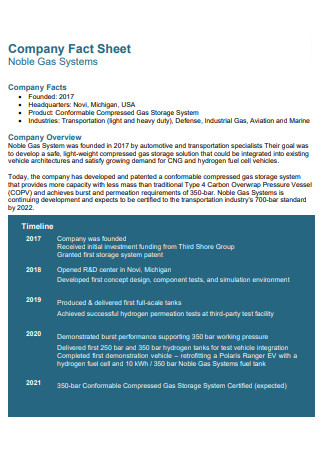
Gas Company Fact Sheet
download now -
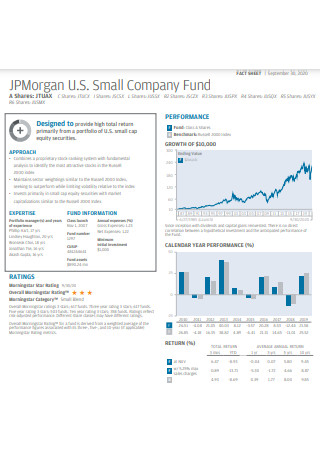
Small Company Fund Fact Sheet
download now -
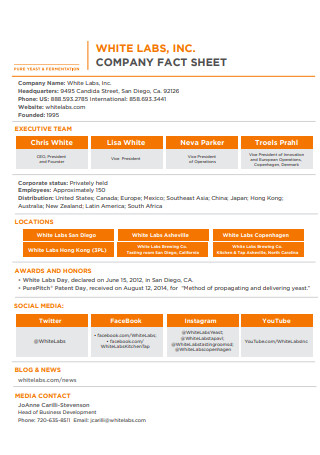
Lab Company Fact Sheet
download now -
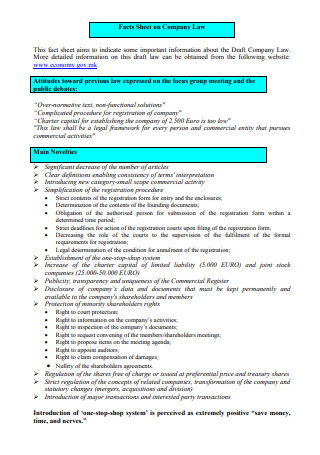
Company Law Fact Sheet
download now -
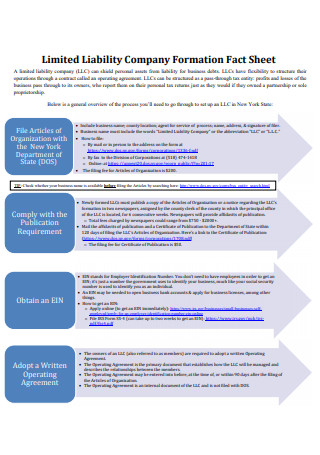
Limited Liability Company Formation Fact Sheet
download now -
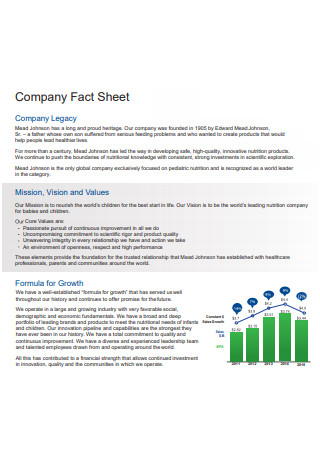
Company Legacy Fact Sheet
download now -
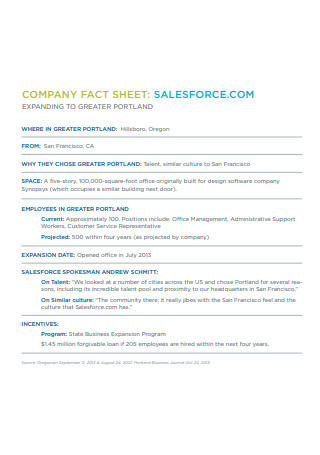
Sales Company Fact Sheet
download now -
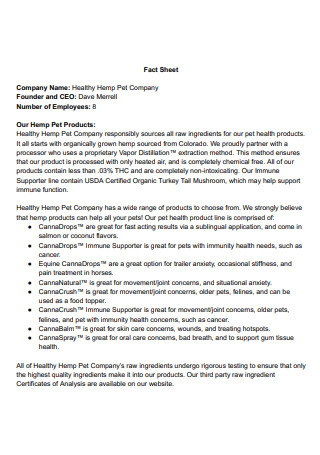
Pet Company Fact Sheet
download now -
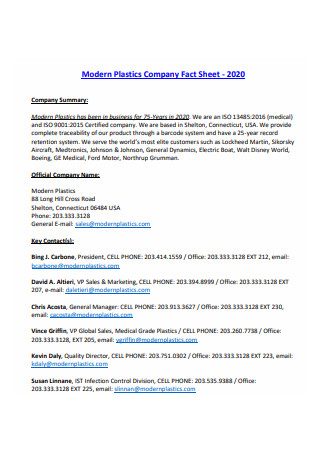
Modern Plastic Company Fact Sheet
download now -
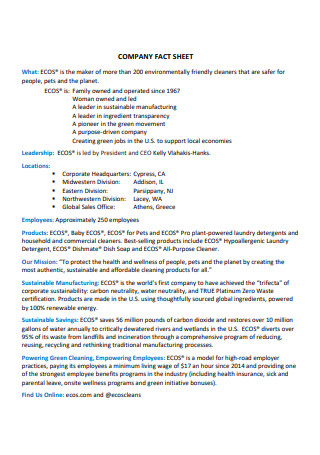
Simple Company Fact Sheet
download now -
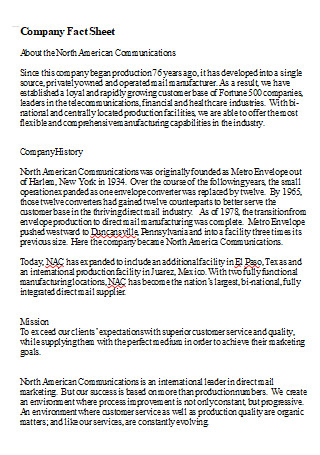
Company Fact Sheet in DOC
download now
FREE Company Fact Sheet s to Download
25+ Sample Company Fact Sheet
What Is a Company Fact Sheet?
Benefits of Using a Fact Sheet
Errors to Avoid When Writing a Fact Sheet
How To Create a New Hire Fact Sheet
FAQs
What is the proper way to cite a fact sheet?
What is an information sheet, exactly?
What is the format of a corporate fact sheet?
What is the definition of a fact file?
What Is a Company Fact Sheet?
The company fact sheet is a quick summary of essential details about your business plan, startup, or organization. It’s a quick-to-read, short, and brief overview of your company that may be used for various applications. A fact sheet presents appealing information clearly and concisely to readers from your target demographic. A fact sheet is a paper or a digital document that provides information about a company, organization, product, service, campaign, event, or other issues. A fact sheet should, in general, focus on a single problem and be no more than one page long, with a simple, easy-to-read layout. If you’ve never made one before, follow some of the general guidelines below and, if necessary, use a fact sheet template.
Benefits of Using a Fact Sheet
We will invariably suggest creating a fact sheet, also known as an information paper or white paper, during each client interaction. Fact sheets are one of the most straightforward and effective forms of corporate communication. Why? The following are five compelling reasons.
Errors to Avoid When Writing a Fact Sheet
Avoid these typical blunders when putting out your fact sheet.
The font size should not be small.
A fact sheet should be simple to comprehend. You don’t want readers having difficulty reading your fact sheet because the font is too small. It’s better to go more significant if you’re having problems settling on font size. To fit more content on the page, don’t use smaller fonts.
Excessive information
Reduce the amount of material on your fact sheet to the absolute minimum required to make your point. It’s easy to get carried away while gathering facts and figures about a topic. Still, too much data will overwhelm your audience. Attempt to make a considerable impression with a tiny amount of important information.
Sources that entertain the facts
For your facts, it’s critical to mention sources and attributions. The points, on the other hand, should remain the center of attention. Rather than adding references and attributions in the main narrative report, list them as footnotes or at the bottom of a fact sheet.
Inaccurate information
Your fact sheet’s information should be as up-to-date as feasible. When more recent statistics are available, don’t reference figures from studies that took place years ago. If you’re going to utilize the same fact sheet year after year, make sure you update it every year with the most up-to-date information.
Keeping your attention on your business.
Your fact sheet should be a part of your marketing toolset, and it should adhere to the same marketing standards as the rest of your efforts. Avoid making a list of facts that are purely related to your company or product. Instead, connect those facts to your audience and demonstrate why the information you’re sharing is relevant to their worries, difficulties, and requirements. According to common study and entrepreneur data, more than half of all enterprises fail due to a lack of capital. Many of these experiences have aided others, particularly those who are just starting in business. However, it is critical to have explicit knowledge of what it includes. Obtaining capital to run a business can be extremely difficult, and small enterprises are especially prone to this issue. According to top entrepreneur statistics from 2019, 67% of small business owners are forced to use personal financial assets to deal with financial challenges.
How To Create a New Hire Fact Sheet
Making a fact sheet for new hires can help them feel more at ease with the company right away. The first day of work for a new employee is more than just a day. It’s the start of a journey with your firm that, if it’s a good fit, may span decades. That is why properly onboarding new employees is critical. We could point to countless publications that deal with this issue right now. And they’re all meant to help new hires adjust to their new environment. With this sheet, the new hire will feel more at ease with the company from day one, if not earlier. They will be familiar with the company’s mission statement, history, founders, and other pertinent facts. Here are some of its steps.
Step 1: Create a basic outline.
Making a strategy before beginning any design job plan is maybe the most crucial recommendation for beginner designers. Taking the time to plan things out may seem counterintuitive in today’s fast-paced environment, but it is worthwhile. Otherwise, you’re setting yourself up for errors, unnecessary irritation, and time waste. The fact sheet for a new hire should be the most straightforward plan you’ll ever make. It is, after all, information about the company for which you work! As a result, you should be familiar with the majority of the vital information and details.
Step 2: Select a template for an infographic.
Once you’ve figured out your strategy, you’ll be able to find the ideal infographic template for your fact sheet. I recommend modifying one of our templates to your specific needs. Starting with a completely blank page can be intimidating at times. With a template, though, all of the difficult decisions have already been taken.
Step 3: Fill in the header details.
Make the header count. It is the first thing that new hires will see on your fact sheet. And from their first day until whenever, make them feel like they are a part of the team. With these two statements, you can instill a mindset in them that will last throughout their tenure at your company. Additionally, it aligns them with your current employees. Further, include your company’s primary social media accounts and email address, as well as a helpful reminder to follow those accounts. I propose putting the following five elements in your header:
- A greeting with your company’s name prominently displayed. You may also put the name of the new employee in this.
- The URL of your company’s website, as well as any necessary email addresses.
- Accounts on social media that are relevant to your brand. The mission statement of our organization.
- The values that your team embodies. To promote a sense of belonging, use the word “we.”
Step 4: Add a few basic facts about your business.
The Quick Facts section, which provides some background information about your organization, will be added next. It doesn’t have to be the entire history of your organization, just enough to put recruits in context. This is another opportunity to share some information about your company’s culture. I chose to merge a little bit of the past with our future aspirations for our Quick Facts section. Include some information about the team in this part as well. I recommend the following four items for an excellent Quick Facts section:
- Write a short description for each fact; they can inquire if they want to learn more!
- A corresponding icon should accompany each point. Check out this in-depth tutorial for help choosing the proper icons.
- Create a timeline by arranging the points in chronological order.
- Include five to ten significant facts or dates.
Step 5: Introduce the members of your new hire’s team.
If your organization is small, you can specify who is on your new hire’s team and to whom they should report under the Team area. You can also enter a more detailed bio for each team member. Provide information about your new hire’s mentor if mentorship is part of your onboarding process. This is usually someone from outside their immediate team who can assist them in adjusting to their new position. The following is the information you should include for each member of your team:
- Their given name.
- Their email address and the title of their position.
- Employee’s brief bio.
- The command structure.
- Indicate who will be your new hire’s mentor.
FAQs
What is the proper way to cite a fact sheet?
To include a fact sheet citation on the Works Cited page, start with the author’s name. If it’s a person, provide their last name, a comma, then their first name. Add a period in the end. In quote marks, write the document’s title and a period. “Fact sheet” should be written without quotation marks. Add a period in the end. Determine which organization is associated with the fact sheet. If there isn’t a date listed, write “n.d.” without the quotation marks. End with a period after describing the document’s medium, such as “Print” or “Web” without quotation marks.
What is an information sheet, exactly?
An entity gives an individual an information sheet so that they can keep track of basic personal information. These details will be used in the transaction that the business must process, which may occur in various fields and circumstances. New clients, membership applicants, job seekers, students, and others may be asked to fill out information sheets. Also, the information sheet should provide a brief overview of the research project and its goals and a clear outline of the entire research process in language that is understandable to non-experts. It should also define what participation entails in practice, including how long it takes, where it occurs, and what it involves.
What is the format of a corporate fact sheet?
Your business fact sheet should be packed with information yet presented attractively instead of crammed onto a single page. Similar to an infographic, colors and images should be used to make your fact sheet as appealing as feasible. Only include the most pertinent facts on your fact sheet.
What is the definition of a fact file?
A Fact File is a concise report that summarizes all of the most pertinent information about a single topic. This subject could be an object, a location, or even a person. Fact files are an excellent resource for teaching courses on specific issues because they are concise and easy to understand.
Fact sheets can be a simple and effective method of communicating with a broad audience. An information sheet cannot be created in a one-size-fits-all fashion. Consider the numerous examples provided below to determine the best format for your project. Avoid becoming too engrossed in the details, and most importantly, have fun!
